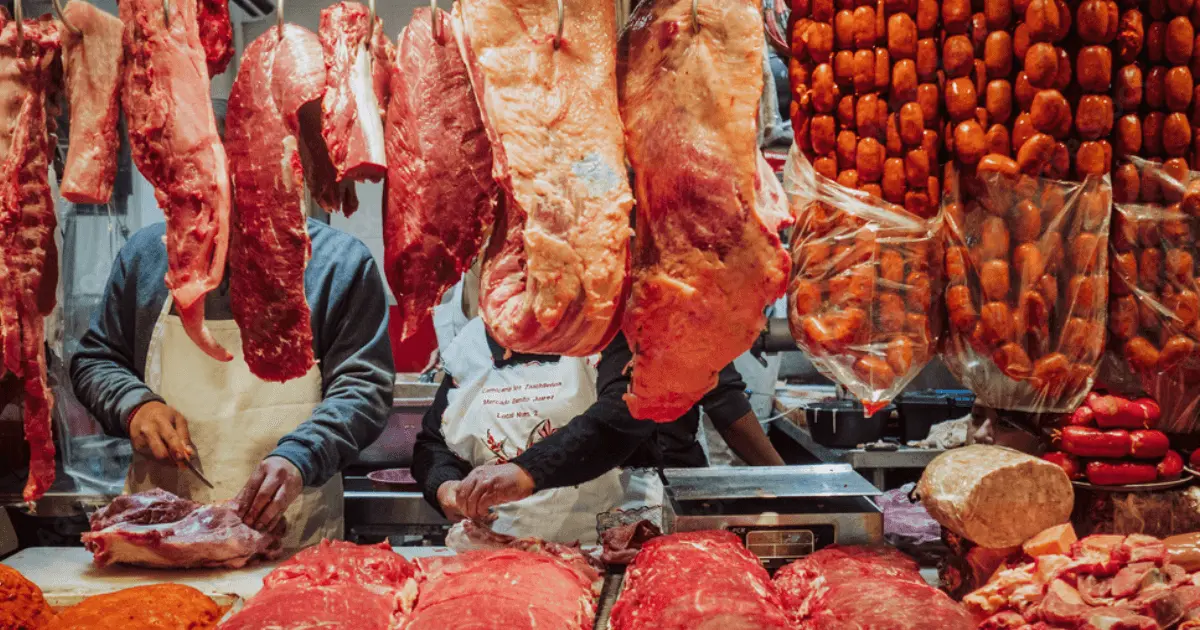Explore the Regional Flavor at Bagley Farms Meat Market Edwardsville IL: Fresh and Delicious
Explore the Regional Flavor at Bagley Farms Meat Market Edwardsville IL: Fresh and Delicious
Blog Article
Uncover the Art of the Butcher's Cut in a Modern Meat Market
In the ever-evolving landscape of contemporary meat markets, the butcher's cut has actually transcended its typical roots, combining olden workmanship with modern practices. What genuinely sets the contemporary butcher apart is their capability to create a much deeper connection in between consumers and the origins of their meat.
Development of Butchery Techniques
The development of butchery techniques shows a rich tapestry of technology and adaptation driven by advancements in modern technology, changes in consumer need, and a deeper understanding of meat science. Historically, butchery was a craft gave via generations, with techniques sharpened over centuries to make the most of return and flavor. Nevertheless, the commercial change ushered in mechanization, changing typical methods and allowing large-scale handling.
The mid-20th century saw butchery techniques additionally improved by clinical insights right into muscular tissue biology and meat aging, boosting both tenderness and taste. Developments like vacuum cleaner product packaging and refrigeration expanded product shelf-life, enabling butchers to expand offerings and boost quality control. This duration likewise marked the increase of customized tools, such as band saws and meat slicers, which raised accuracy and efficiency in meat processing.

The 21st century has actually introduced digital innovation into the butchery realm. Computerized systems now assist in monitoring animal provenance and optimizing cuts to meet particular customer preferences. Furthermore, a renewal in artisanal butchery has actually emerged, mixing standard skills with modern knowledge to accommodate customers seeking honest and sustainable meat options. This evolution emphasizes a vibrant interplay in between practice and development, conference modern needs while protecting the craft's heritage.
Comprehending Meat Cuts
Understanding the ins and outs of meat cuts is vital for both butchers and consumers seeking top quality and worth. Each cut comes from a various part of the pet, passing on one-of-a-kind flavors, appearances, and food preparation methods - bagley farms meat market edwardsville il. Proficiency of these differences not only boosts culinary experiences however also takes full advantage of the energy of each carcass. For butchers, precise cuts show ability and respect for the craft, making sure marginal waste and optimal return.

Understanding muscular tissue structure is essential; muscles made use of much more often by the pet tend to be tougher and are best suited for sluggish cooking approaches, while less-used muscle mass, like those discovered in the loin, are more tender and suitable for grilling or roasting. Knowledge with these distinctions encourages consumers to make informed choices, boosting their culinary undertakings.
Selecting Top Quality Meat
Selecting the appropriate meat includes greater than simply selecting a visually enticing piece from the screen. bagley farms meat market edwardsville il. The art of selecting top quality meat requires a critical eye and knowledge of specific attributes that symbolize quality and excellence. Pay focus to the color; beef must have a bright, cherry-red shade, while lamb must show a soft pink tone, and pork a pale pink. This suggests the meat is fresh and hasn't been exposed to oxygen for as well lengthy.
Secondly, think about the marbling, which describes the white flecks of fat within the Click Here muscle. Correct marbling is an essential sign of inflammation and taste, as it thaws throughout food preparation, improving the meat's juiciness. Bear in mind, greater marbling frequently correlates with superior high quality cuts, such as USDA Prime.
Structure is one more essential aspect; meat needs to really feel strong to the touch, not slimed or extremely soft. In addition, bear in mind the aroma. Fresh meat must have a tidy, neutral smell, without any type of sour or repulsive odors.
Matching Cuts With Cooking Methods

Alternatively, tougher cuts like brisket and chuck roast are rich in collagen, which damages down right into gelatin when cooked gradually. These cuts are ideal for braising or slow roasting, enabling the meat to soften with time and develop deep, complicated tastes. Cuts such as brief ribs and pork shoulder get on well with slow-cooking methods, where expanded cooking times change their durable textures into succulent dishes.
Lamb shanks and oxtail, which require prolonged cooking to tenderize, are ideal candidates for stewing or slow simmering. These methods coax out rich, passionate tastes while maintaining dampness. By recognizing the distinct qualities of each cut, chefs and home cooks alike can elevate their cooking productions, making certain each recipe is both pleasing and unforgettable.
The Butcher's Role Today
Browsing the evolving landscape of the modern-day meat market, the butcher's role today expands beyond simple preparation of cuts. Contemporary butchers are cooking craftsmens, teachers, and supporters for sustainable methods.
In addition to crafting exact cuts, butchers now engage straight with customers, using cooking advice and customizing options to suit private demands and preferences. Their expertise in meat aging, marbling, and taste profiles encourages consumers to make informed choices, enhancing their culinary experiences. This customized solution exhibits the butcher's progressing role as a relied on consultant in the cooking area.
Furthermore, butchers are crucial in minimizing waste, making use of whole animals to produce varied items such as sausages and view website supplies. This comprehensive method not only appreciates the pet however additionally straightens with contemporary sustainability goals. In this way, the contemporary butcher symbolizes both custom and technology, adjusting to an ever-changing market while maintaining the virtuosity and integrity of their craft.
Conclusion
Proficiency important site in comprehending diverse meat cuts and top quality signs encourages butchers to supply informed referrals, straightening particular cuts with optimal food preparation techniques. By honoring historic practices while accepting contemporary needs, the butcher's function remains essential in today's advanced meat market.
Report this page